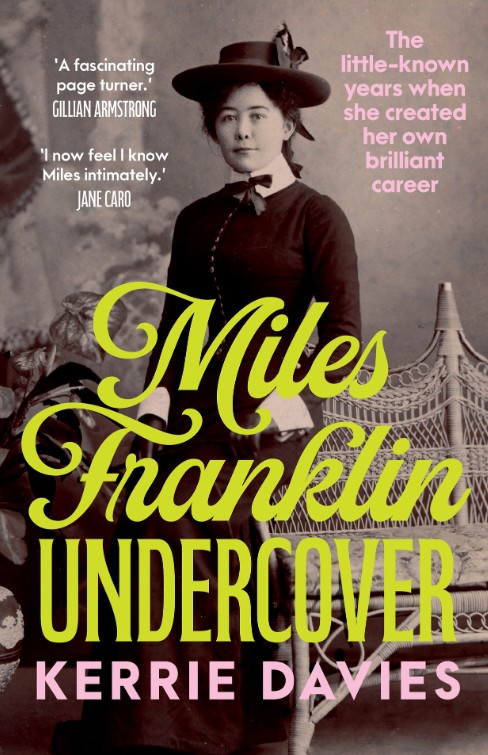In this episode of Biographers in Conversation, Dr Kerrie Davies chats with Dr Gabriella Kelly-Davies about her choices while crafting Miles Franklin Undercover: The Little-Known Years When She Created Her Own Brilliant Career.
Miles Franklin Undercover is a powerful story of a young woman’s enduring resilience, and her determination to always be her own heroine
Miles Franklin Undercover
Miles Franklin is best remembered for her youthful debut novel My Brilliant Career, which made her a literary sensation at just 21 years old. But few know what happened next: shortly after that early fame, Miles Franklin virtually disappeared from the public literary scene. Kerrie Davies’s new biography, Miles Franklin Undercover: The Little-Known Years When She Created Her Own Brilliant Career, unravels the mystery of those ‘missing’ years.
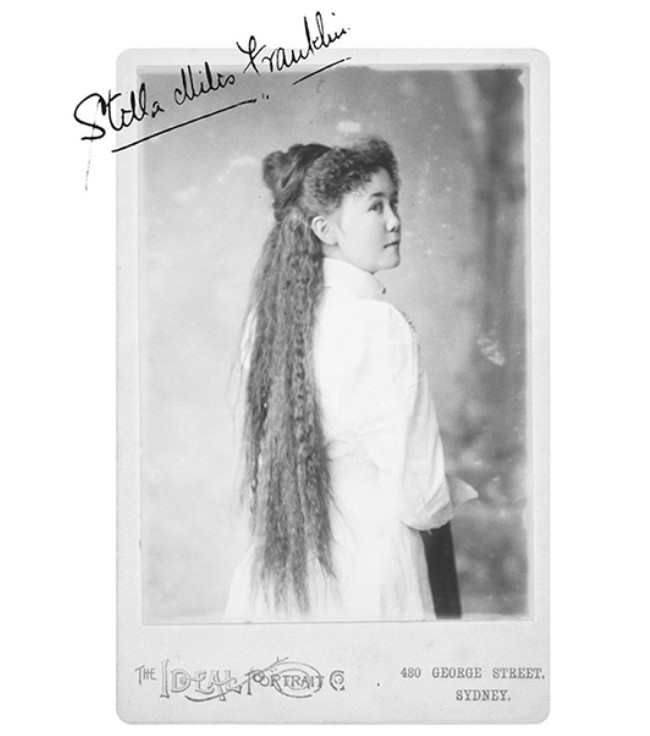
Miles Franklin, aged 18, three years before My Brilliant Career was published
State Library of New South Wales
Early Fame and a Mysterious Disappearance
Miles Franklin’s rise to prominence was meteoric. In 1901, at the age of 21, she published My Brilliant Career, a spirited coming-of-age novel that dazzled Australia. The book’s success made Franklin a household name and even inspired young women to write to her about their own dreams and frustrations.
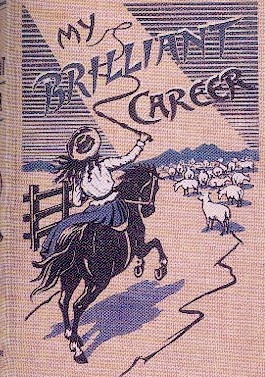
My Brilliant Career, first edition cover 1901
Dictionary of Sydney
Yet with fame came pressures. Critics assumed the novel was scandalously autobiographical, and Franklin, an independent bush-bred woman, grew uncomfortable with the spotlight. Despite the acclaim, the rewards were slim; she earned little money from the book due to an unfavourable publishing contract and the challenging economic times of the Federation drought.
Family expectations weighed heavily on Miles. ‘When are you going to marry’, was her grandmother’s constant question. However, rather than settle into a conventional role, Miles made a bold choice: just a couple of years after My Brilliant Career’s debut, she vanished from literary circles. Publishers rejected her next manuscripts, and in 1906 the young author packed her bags and left Australia, seeking to carve out a new path on her own terms.
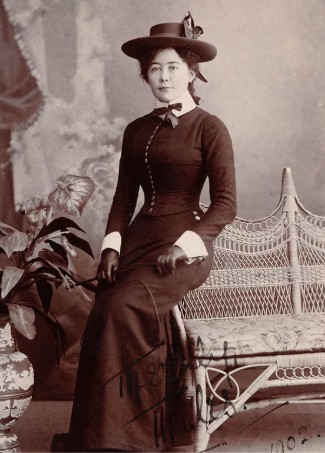
Miles Franklin 1902
State Library of NSW
Undercover in Domestic Service
One of the most astonishing adventures in Franklin’s ‘lost’ years was her stint as an undercover housemaid. In 1903, riding on journalistic ambition, Miles became what she jokingly called a ‘girl stunt reporter’, going incognito as a domestic servant for an entire year. She took on back-breaking work in the grand homes of Sydney and Melbourne—scrubbing floors, doing laundry by hand, lighting fires and serving wealthy families their meals in bed. This was no vanity project. Instead, Miles’s goal was to investigate the harsh ‘servant question’ of the era, the quiet struggles between upstairs masters and downstairs maids.
It was a daring move for a young woman who had been a literary celebrity just months earlier. Inspired by trailblazing female journalists like Nellie Bly who went undercover to expose social injustices, Miles Franklin wanted to shed light on the drudgery and indignities endured by domestic workers, or ‘slaveys’ as they were then called.
By living the life of a servant, Miles gathered rich material for a new book. She painstakingly documented her experiences in a two-volume manuscript titled ‘When I Was Mary Anne’, adopting the persona of Mary Anne the maid in her writing. This manuscript, complete with diary excerpts from 1903 to 1904, vividly captured the daily humiliations and humanity of servant life. Yet, much like Franklin herself during those years, the book stayed hidden from public view because no publisher would take it on.

Miles as a servant. The servant’s name she used in her unpublished manuscript was ‘Mary Anne’.
State Library of New South Wales
During our conversation, Kerrie Davies describes unearthing ‘When I Was Mary Anne’ in the State Library of New South Wales and how it felt discovering a secret window into Miles Franklin’s world. Mile’s undercover experiment may have been largely forgotten by history, but through Kerrie’s research, we learn how that year in servitude steeled Miles’s resolve and gave her a new understanding of women’s working conditions.
A New Chapter in Chicago: From Novelist to Activist
Miles Franklin’s journey didn’t end in domestic service. In 1906, frustrated by limited opportunities in Australia, she set off for the United States, determined to reinvent herself. She landed in America during the energetic tide of the Progressive Era, a time of social reform and early feminist activism on both sides of the Pacific. Miles found her way to Chicago, where an introduction at Jane Addams’s Hull House, the famous settlement house, opened the door to a vibrant community of reformers.
In Chicago, Miles Franklin transformed from novelist to women’s rights activist. She connected with fellow Australians and kindred spirits like Alice Henry and impressed Margaret Dreier Robins, president of the newly formed National Women’s Trade Union League of America. By 1907, Miles was offered a job with the League, beginning what would become a passionate second career.

Miles Franklin in Chicago
State Library of New South Wales
Kerrie Davies highlights how Miles Franklin threw herself into advocating for working women once in Chicago. Starting as a secretary for the Women’s Trade Union League, Franklin’s responsibilities quickly grew. She helped organise women workers, lobbied for better conditions, and harnessed her writing talent for the cause. Before long, she was not only keeping the League’s minutes but also contributing articles to its publications.
Miles co-founded the League’s journal Life and Labor, effectively serving as a union press officer for women’s labour rights. She championed issues such as fair wages and safe conditions for women in factories and households.
This period abroad was eye-opening for Miles. She mingled with pioneering American suffragists and reformers, even becoming acquainted with figures like Jane Addams, a titan of social work, drawing inspiration from them. At the same time, she remained connected to the Australian feminist network; she corresponded with old mentors such as Rose Scott, a Sydney suffragette who had once called Miles her ‘spirit child’.
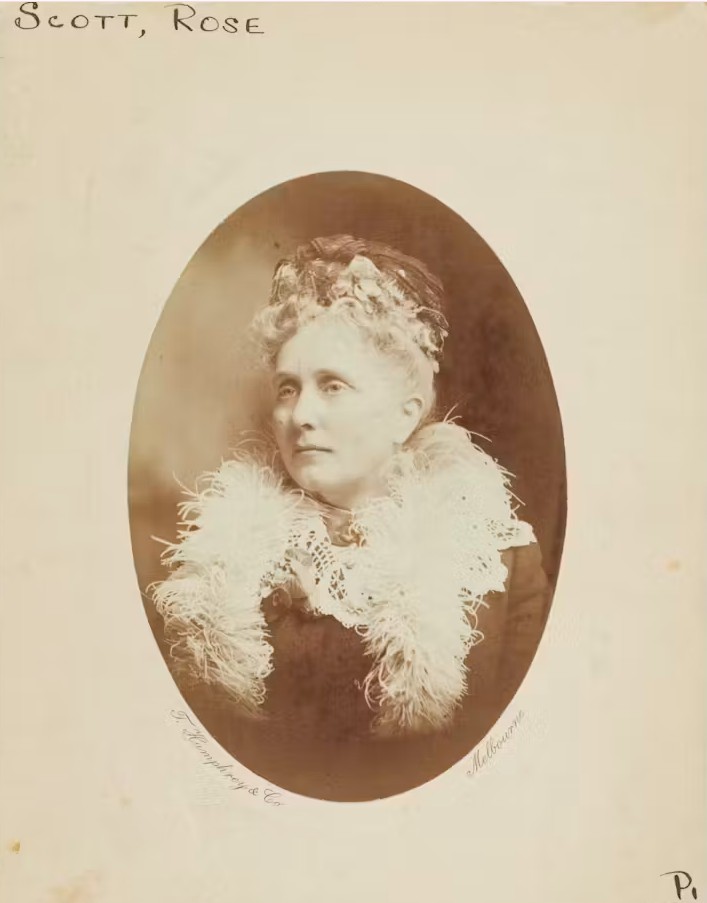
Suffragette Rose Scott called Miles her ‘spirit child’
State Library of New South Wales
Miles Franklin’s personal journey unfolded against the broader backdrop of early 20th-century feminism. Both Australia and the U.S. were in the midst of a feminist awakening. Australia had granted women the vote in 1902, and American women were agitating for suffrage and labour rights. Miles Franklin found herself at the heart of this movement in two countries.
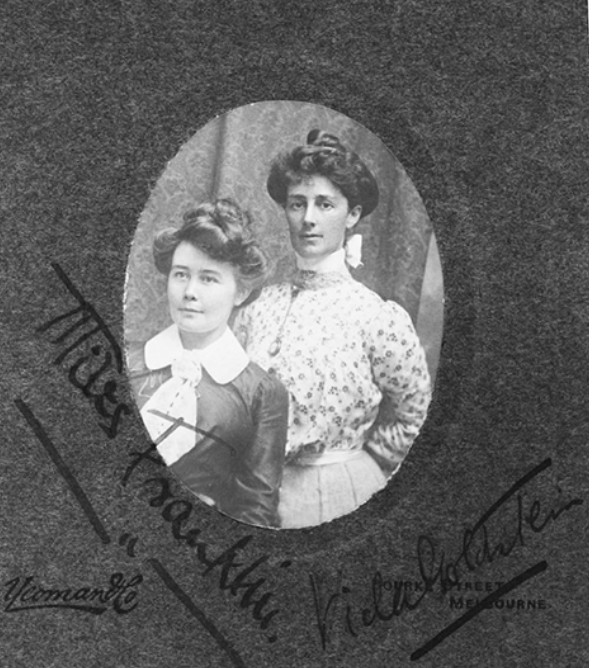
Miles Franklin and Australian suffragist and social reformer, Vida Goldstein, c. 1900–1920
State Library of Victoria, H42756a.
Through Kerrie Davies’s storytelling, we see how Miles Franklin’s evolution from literary star to grassroots activist was very much a product of her time: she was a New Woman of the Edwardian era, pushing boundaries and forging a ‘brilliant career’ of her own making.
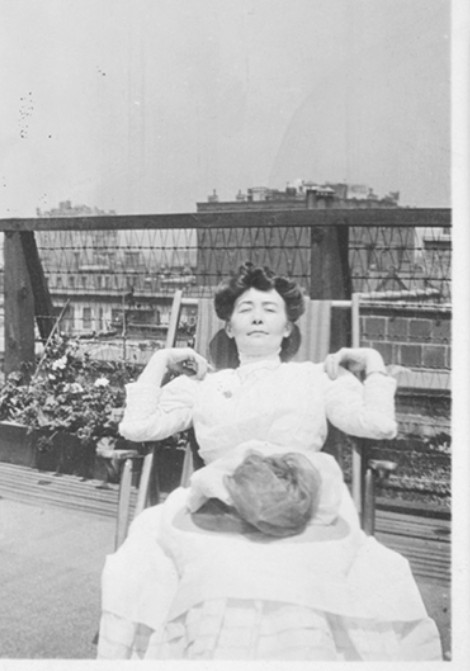
Miles Franklin relaxing in Chicago
State Library of New South Wales
Unearthing Letters, Diaries and Lost Manuscripts
One of the joys of this conversation is hearing about the treasure trove of personal writings Kerrie Davies uncovered during her research. Miles was a prolific letter-writer and diarist, and these intimate writings provide an emotional subtext to her public adventures.
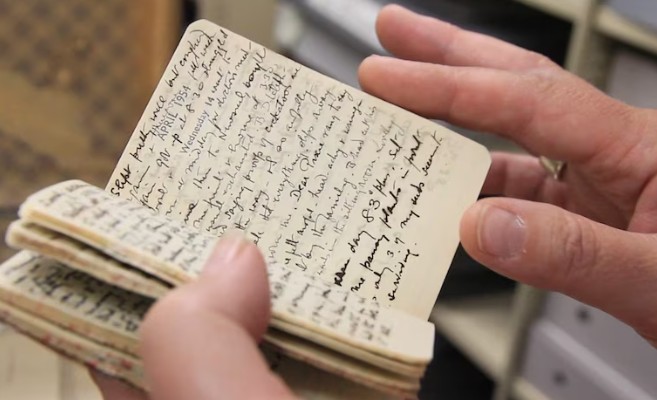
Miles Franklin’s last private diary was found inside a suitcase containing memorabilia and documents
ABC News: Ana Tovey
Kerrie gained access to Miles’s correspondence and journals, including candid letters to friends and luminaries such as the bush poet A. B. ‘Banjo’ Paterson. These documents had been tucked away in archives for decades, some never before published, until Kerrie brought them to light. They reveal Miles Franklin not just as a historical figure, but as a young woman with wit, vulnerabilities and longing.
Captures a wonderful sense of Miles Franklin as a person. A fascinating page turner
Gillian Armstrong, director of My Brilliant Career
Kerrie describes how Miles could be witty, flirtatious and adventurous in her private writings, defying the expectation that women be demure and proper. At the same time, her letters hint at the anxiety and self-doubt she grappled with behind her brave public façade. These personal details add poignant context to her bold choices.
Historically, the letters and journals also fill in blanks about what Miles was doing and feeling when the world lost track of her. We learn about her day-to-day life: one moment she’s excitedly planning an undercover exposé, the next she’s homesick for Australia; later, in Chicago, she writes of marathon editorial meetings and after-work piano lessons. Such firsthand accounts let us time-travel into Miles Franklin’s Edwardian world.
Kerrie Davies explains how she wove these primary sources into Miles Franklin Undercover. She drew on the unpublished ‘Mary Anne’ manuscript and diary extracts, as well as Miles’s letters and even contemporary newspapers, to reconstruct a vibrant narrative. She shares a few striking examples of what she found: one delightful discovery was a studio photograph of Miles in full maid costume labelled in Miles’s handwriting as ‘your little Mary-Anne’, which confirmed the lengths of her ruse. Another revelation came from correspondence with Banjo Paterson. It showed a warm, even intimate friendship and even a hint of collaboration given that Banjo once offered to co-write with her, which she cheekily declined.
Riveting!
Jane Caro AM, columnist, author, feminist
Each letter, diary snippet, and scribbled note adds a layer of understanding, helping Kerrie sensitively portray Miles’s inner life and motivations. It reminds us that behind the published novels and public achievements are the private stories, the false starts, and the heartfelt decisions that truly define a person’s legacy.
Each letter, diary snippet, and scribbled note adds a layer of understanding, helping Kerrie sensitively portray Miles’s inner life and motivations. It reminds us that behind the published novels and public achievements are the private stories, the false starts, and the heartfelt decisions that truly define a person’s legacy.
Crafting Miles Franklin Undercover: Structure and Voice
In this conversation, we also go behind the scenes of the biographer’s craft. Kerrie Davies shares how she approached writing Miles Franklin Undercover in a non-traditional way. Rather than crafting a standard cradle-to-grave biography, Kerrie focuses on a specific slice of Miles’s life from 1901 to 1915, creating a focused, immersive narrative. This structure makes the book feel almost like a real-life sequel to My Brilliant Career, concentrating on the dramatic second act of Miles’s story.
Kerrie discusses how liberating it was to break away from covering every year of Miles’s long life and instead zoom in on the most action-packed decade when Miles was forging her ‘other’ brilliant career as a journalist and activist. By narrowing the scope, Kerrie could delve deeper into those years, almost in the style of a novel or memoir rather than an academic biography.
A captivating read. Miles Franklin comes alive
Brigitta Olubus, author of
Shirley Hazzard, A Writing Life
Kerrie’s authorial voice and narrative style were important choices in Miles Franklin Undercover. Kerrie explains that she recreated scenes from Miles Franklin’s world to bring the story alive. Using the letters, diaries and unpublished manuscript as her guide, she imagines what it was like to be Miles walking into a grand manor in servant’s uniform or arriving wide-eyed in bustling Chicago. These reconstructed moments are grounded in fact, often directly using Miles’s own words or contemporary observations; they read with the colour and immediacy of a novel.
A triumph of enthralling storytelling
Sue Williams
Kerrie immersed herself in her subject, visiting historical sites, combing through old newspapers and even travelling to Chicago to experience Miles’s journey vicariously to capture authentic details. She tells us that where she had to speculate to fill gaps, she made careful notes, but largely the richness of the archives allowed Miles’s voice to shine through.
By structuring the narrative around themes and turning points such as fame, exile, undercover work and activism rather than a dry chronology, Kerrie emphasised the larger themes of Miles’s life. Our conversation highlights some of these themes: the courage it took for a young woman in the 1900s to defy societal expectations; the importance of financial and creative independence to Miles; and the way a writer’s life can influence her art and vice versa.
Miles Franklin Undercover Reviews
Thirty books we’re excited to read
The Sydney Morning Herald, 2 January 2025
‘Davies is a further dialogue with originality and the new...this keenly researched and lively introduction to her (Franklin’s) vitality and vulnerability will introduce her to a wider audience.’
The Age / SMH / Brisbane Times, 19 March 2025
‘A fascinating story of an embattled talent: 12 new books to delve into’
Sydney Morning Herald, 5 March 2025
‘An absolute treat... completely in sync with who she was and the times that she lived through.’
Good Reads, 5 Star
‘I didn’t just read about her...I felt her. And I felt all the other women standing behind her, behind me... whispering you are not alone.’
Chuying, reader
Miles Franklin Undercover Podcasts and Interviews
Miles Franklin’s secret life as a ‘boy sober’ undercover maid
Conversations, 10 April 2025

Kerrie Davies is the author of Miles Franklin Undercover, released March 2025 (Allen & Unwin). Her previous book, A Wife's Heart, created national discussion about the poet Henry Lawson & his marriage. She has appeared at the Sydney Writers' Festival, Brisbane Writers Festival & the National Folk Festival. A former journalist, Kerrie was a visiting fellow at the State Library NSW and is Senior Lecturer at the School of the Arts & Media, UNSW Sydney. Kerrie writes for the Conversation, and lives on the NSW North Coast and Sydney with her husband, Oliver and their two dogs, Ursa & Loki.




